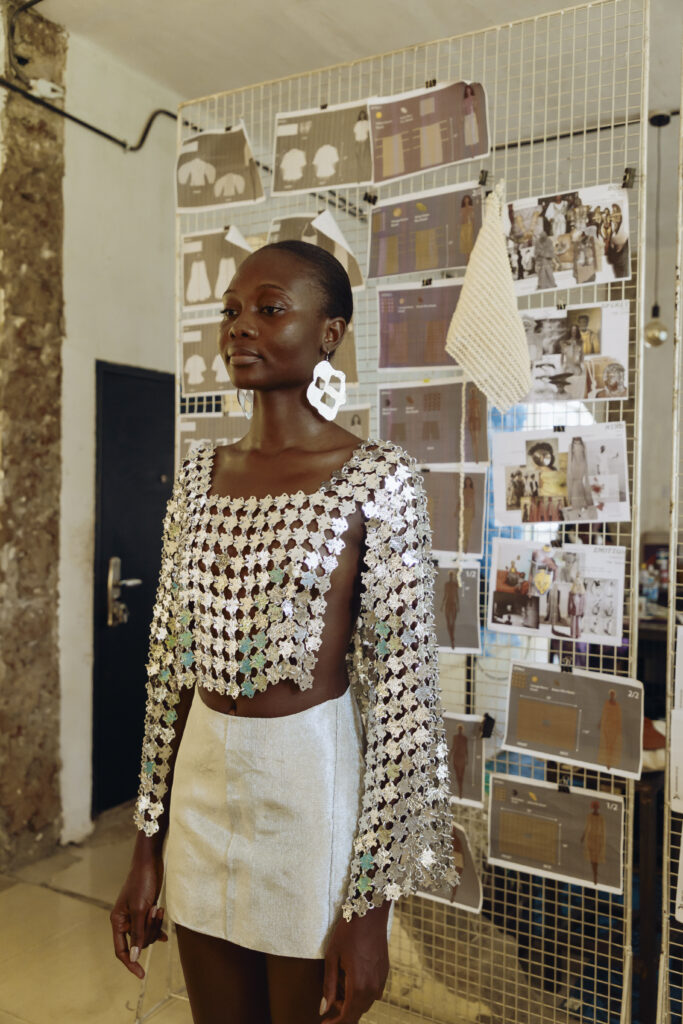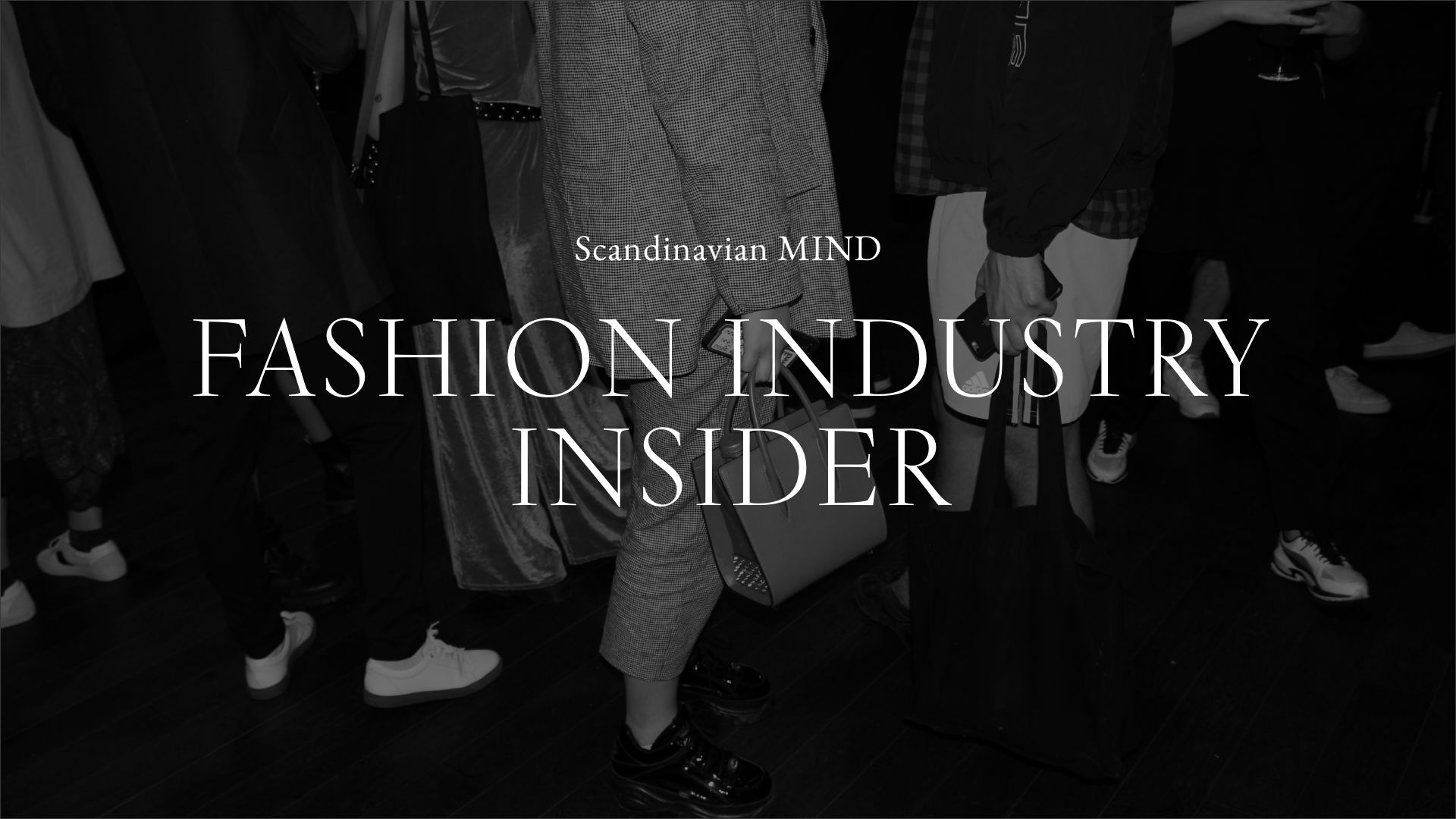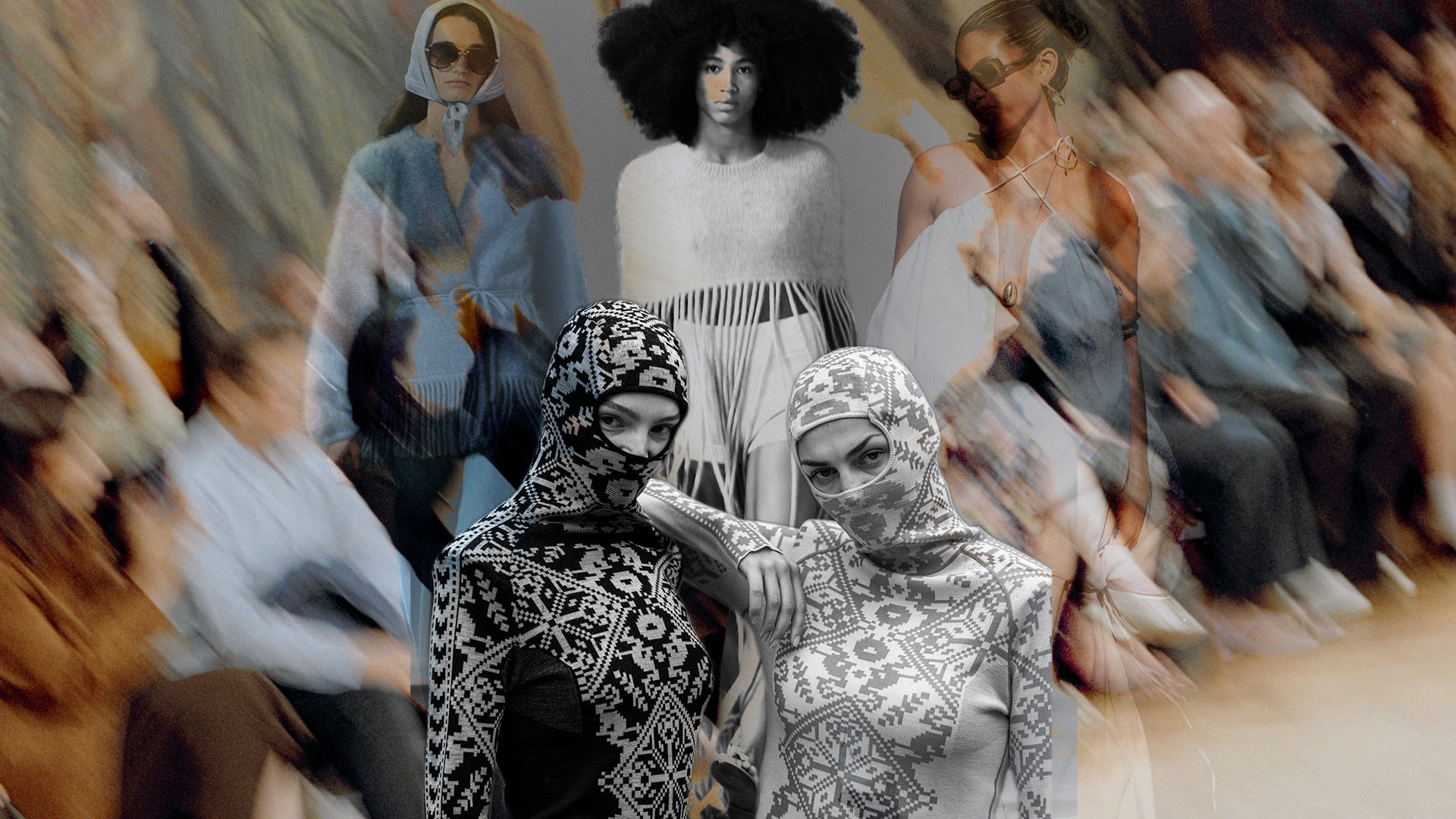
When winning the Zalando Visionary Award, IAMASIGO Ogisi secured a spot on the official show schedule at Copenhagen Fashion Week. She presented a spectacular immersive space installation, a portal to transport people out of this world into an unseen world.
— Our work deals between how the body engages with space through time, so we wanted to create a space for different body canvases that were handling the pieces, she explains, continuing,
— I focus my research on African textile heritage, how we interact with it, and how to play with materials. We always try to be unpredictable and contradict, and challenge ourselves, including manipulating fibres and materials in different ways. There’s a meditation that goes into everything we’re making, and time allows for that to now be the centre of how we harness everything we create and how we make the consumer, or the collector, value what they’re acquiring.

What have you learned from being in the Nordics and showing at Copenhagen Fashion Week?
— The C’s. Copenhagen is so cool, calm, conscious, connected, and clean. Coming from a maximalist culture, I found a way to balance maximalism and minimalism and bring those two worlds together.
And by showing here, you aim to expand the brand to other markets.
— Yes. We’re consciously doing it, mostly through museums, gallery shows, and niche concept spaces that we love collaborating with. We have to make sure to have a long-lasting relationship with whoever is either collecting or housing our pieces. The museums that collect or lend our pieces make them move through Australia, America, and Europe, and then figure out where these pieces find homes. That’s our strategy. I’m sure it’s not many people’s strategy, but this is how we want to move as a studio practice. We want these people who collect these pieces to harness them in a valuable way. I see all my garments as art pieces, so, for us, it’s about finding more and more institutions, art institutions, and art spaces that understand the vision and the time involved in researching and creating all these pieces.
If we talk about sustainability, is the conversation around it different in the Nordics compared to West Africa?
— I think in Africa, we’ve always been sustainable. It’s all about this slow, conscious, grounded, rooted creativity. It’s only recently that the idea of capitalism has propelled the idea of creativity or craftsmanship. It’s always been about how we’ve constantly been able to create from nothing to something, and, at IAMASIGO, this has always been our backbone. We’ve never wanted to be a fast-producing, over-consumptive brand. We want people to take time to acquire what they want to acquire from us, and also take time to wear it and use it. I think the issue with sustainability is how fast everything is moving; there’s absolutely nothing wrong with being slow, especially when it comes to fashioning and creating.
Do you feel like the current discussion around sustainability in the rest of the world is now where you have always been in your home markets?
— Personally, yes. It’s also really cool to see how everyone has taken this idea of sustainability and conjured themselves around it. And, when there are people who are actually sustainable, they have to be asked, ’Are you also sustainable?’ That makes you question yourself, and then you realise that we’ve actually been sustainable without calling it sustainability. It’s a juxtaposition of both words. So, how do we continue to be sustainable? How do we preserve these crafts, injecting new materials in sustainable processes to give things a longer lifeline, Ogisi explains. She continues:
— We’re also figuring out how to also consciously, but also creatively, ’be sustainable.’ Sustainability can put you in a box. Can I do this? Can I do that? Then you realise that you can’t do anything because you’re so boxed up. While if you open your mind, you realise that sustainability is so expansive. It’s just like how people talk about vegetarians and meat eaters. You realise that you can actually exist without calling yourself either of these things and just continue eating how you eat. It’s the same thing with sustainability. We have to always define things, but sometimes when things are undefined, there is a defining factor in being undefined, too. For me, being an African designer and continuously creating how we create, we’ve always been sustainable in our practices and processes, and I now find ways to also engage all these different communities and make them think outside of the box.

What’s the current state of the West African industry?
— The Nigerian fashion industry has blown up. Even the bank ads on the streets now have women with a tape on their necks, and tailoring. That’s to tell you how invested people are now in fashion. 10 years ago, when I was starting IAMASIGO, everyone thought I was crazy. I was going through different African communities and researching, while everyone asked, ’Can’t you just go to China and order a fabric?’ ’But why would I do that, when I can create it here?’ I responded. To see how people have also seen that vision is what means everything for me. It’s not only about us being a studio practice and decolonising people’s minds; it’s also about foreseeing a new future for design and fashion. Seeing the way fashion has taken up in Nigeria, and in Africa in general, is really inspiring. It’s also challenging because now we have to not make the same mistakes that the West has made, and move in a different strategy.
And what would those mistakes be?
— Overconsumption. Period.
What other things can Nordic brands learn from the West African industry? And what are the keys to expanding the business there, and, say, opening a Lagos flagship?
— For them to expand in Lagos, it’s just about finding a niche audience, like the cool skate crew, and how this niche brand can relate to a niche community. Connecting to and collaborating with a community is the best way to enter Africa. We live and breathe community. We eat in a tray; everybody eats together. We don’t want to eat individually, we always want to eat together — and make money together. If there’s one thing anybody else outside of Africa needs to learn about Nigeria and Africa, it’s togetherness. People honestly don’t really engage with communities when they’re creating. They’re also afraid of the designs being exploited, taken away, or stolen. But once you remove all of that and you have a pure intentional relationship with whoever you’re creating with, the rest is history.
And you’ve experienced firsthand how Nigeria as a market has grown, so the time to expand is now, right?
— The time is always now. What other time would it be? Ogisi states.



